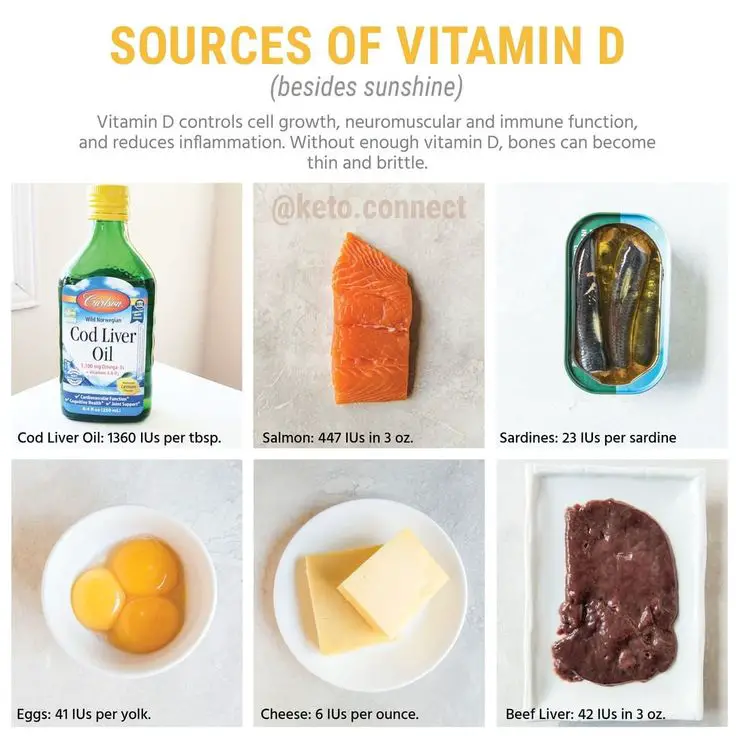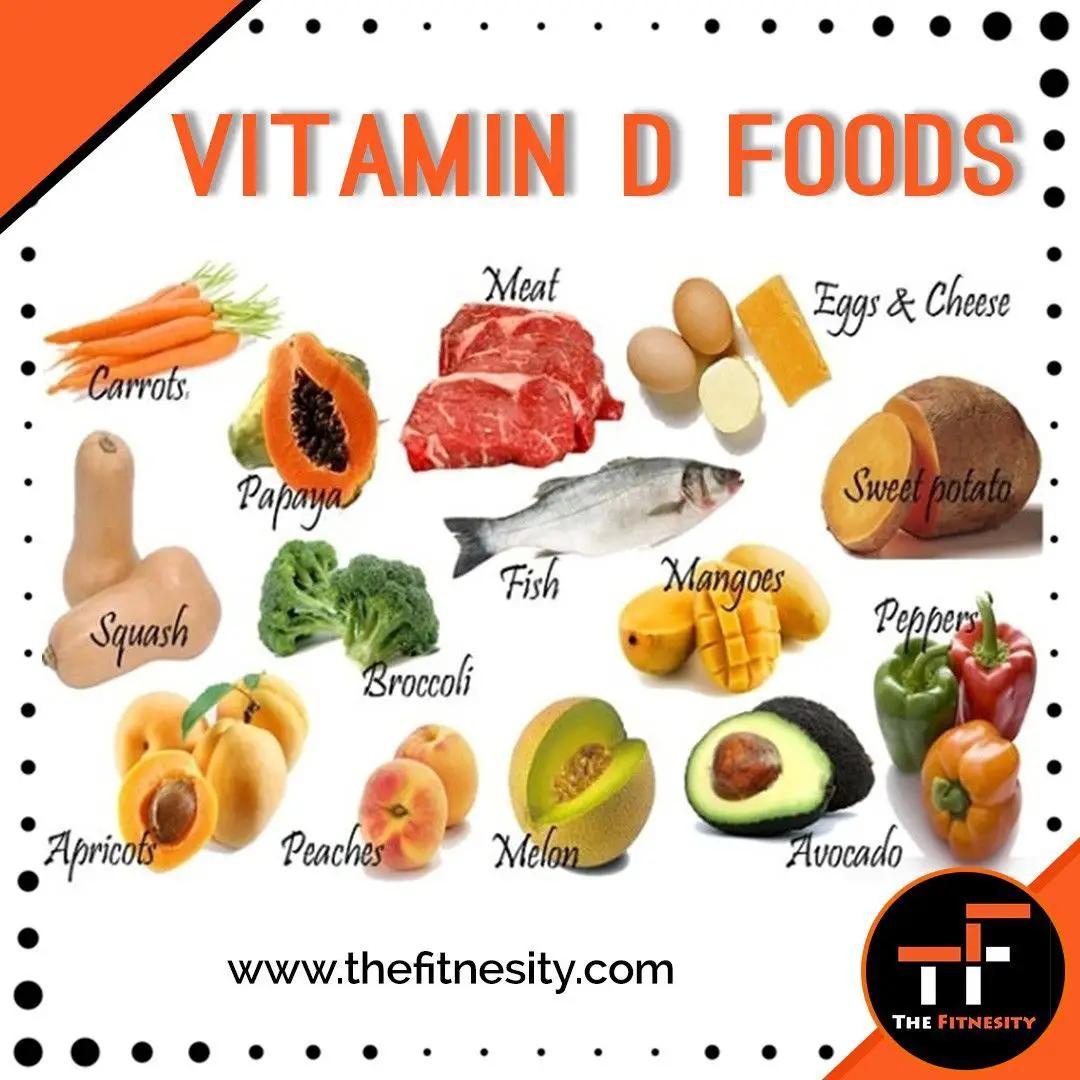How Much Vitamin A Do I Need
The total vitamin A content of a food is usually expressed as micrograms of retinol equivalents .
The amount of vitamin A adults aged 19 to 64 need is:
- 700 µg a day for men
- 600 µg a day for women
You should be able to get all the vitamin A you need from your diet.
Any vitamin A your body does not need immediately is stored for future use. This means you do not need it every day.
Should I Take Vitamin A Supplements
Lots of people take vitamin supplements, but there is no good evidence that they help unless you have a deficiency. Australias best guide to how to eat healthily the Australian Dietary Guidelines doesnt recommend them.
Vitamin supplements are expensive. They are best taken only on a doctors advice.
When It Comes To Vitamin C Absorption Form & Function Matter
When It Comes To Vitamin C Absorption, Form & amp Function Matter When It Comes To Vitamin C Absorption, Form & amp Function Matter
Supplements can feel kind of complicated. You have to decide not only which supplements to add to your wellness routine and which brand to buy from but also understand some of that “science-y stuff” so you can be sure the nutrient will be absorbed in your system to reap its intended benefits.
For some vitamins, that means taking the supplement with food or a fat for others, it just means taking it at a certain time of day.
When it comes to vitamin C, knowing how the essential nutrient is absorbed and utilized can be the difference between closing the vitamin C insufficiency gap and all of that good vitamin C going down the drain .
So, let’s break down how one overlooked vitamin is absorbed by the body and what you can do to make sure your body makes the most of this immune-supporting, collagen-promoting antioxidant.*
“Vitamin C is a water-soluble vitamin that also serves as an antioxidant. It supports several important functions within the bodyincluding proper immune system function, tissue healing, collagen formation, maintenance of bones and cartilage, and optimal absorption of iron. Due to its antioxidant capacity, it also serves to combat oxidative stress within the body,”* says Alexander Michels, Ph.D., clinical research coordinator at the Linus Pauling Institute at Oregon State University.
Read Also: What Vitamins Can Help Lower Blood Sugar
What Is The Outcome
The outcome is very good if you have a mild form of vitamin A deficiency without any symptoms. However, more severe forms may cause permanent loss of vision if treatment with vitamin A supplements is not taken at an early stage. If you have early mild eye problems, treatment can result in full recovery without any permanent loss of vision.
Severe vitamin A deficiency with severe generalised malnutrition in low income countries often leads to death.
Path To Improved Health

Try to incorporate more of these nutrients in your daily diet. Its best to get these nutrients through food, instead of just taking a multivitamin. This is because it is easier for your body to absorb micronutrients through food.
If you are unable to get all the nutrients you need from food alone, ask your doctor if dietary supplements are right for you.
Also Check: How Much Vitamin D Should I Take Daily
What Is Being Tested
Vitamin A is a fat-soluble vitamin that is naturally present in many of the foods we eat. Retinol is the primary form of vitamin A in humans. This test measures the level of retinol in the blood.
Vitamin A is an essential nutrient required for healthy vision and skin, bone formation, immune system function, and reproduction. It is required to produce photoreceptors in the eyes and to maintain the lining of the surface of the eyes and other mucous membranes. A lack of vitamin A can affect night vision, cause eye damage, and in severe cases, lead to blindness. Too much vitamin A can be toxic, causing a range of symptoms, and sometimes leading to birth defects.
The body cannot make vitamin A and must rely on dietary sources of vitamin A. Meat sources provide vitamin A , while vegetable and fruit sources provide carotene . Vitamin A is stored in the liver and fat tissues , and healthy adults may have as much as a years worth stored. The body maintains a relatively stable level in the blood through a feedback system that releases vitamin A from storage as needed and increases or decreases the efficiency of dietary vitamin A absorption.
Vitamin A deficiency is a risk factor for severe measles treatment with vitamin A can shorten the duration of the disorder and may reduce the severity of symptoms and risk of death.
Vitamin D Source: Supplements
Besides eating Vitamin D-rich foods, taking a Vitamin D supplement could help you get the recommended amount in a sun-safe manner. Nature Made supplements come in a variety of forms, including tablets, softgels, and gummies. Doctors typically recommend supplements for people with darker skin tones or those with fat absorption issues, lactose intolerance, and milk allergies.6
Read Also: How Much Vitamin D In An Egg
Causes Of Vitamin A Deficiency
- Young Children and Breast Feeding Women – Getting enough vitamin A is important for children’s development. Deficiency is sometimes seen in developing countries. When breast feeding, both child and mother may become deficient in vitamin A. Xerophthalmia is a common sign of deficiency. Symptoms include dryness of the cornea and redness around the eye.
- People With Cystic Fibrosis – CS Leads to a pancreatic disorder and improper absorption of fats. Vitamin A is absorbed via fat. When fat is not absorbed, vitamin A deficiency occurs.
Vitamin A: Benefits Deficiency Toxicity And More
Vitamin A is a fat-soluble nutrient that plays a vital role in your body.
It exists naturally in the foods you eat and can also be consumed through supplements.
This article discusses vitamin A, including its benefits, food sources, as well as effects of deficiency and toxicity.
There are two forms of vitamin A found in food.
Preformed vitamin A retinol and retinyl esters occurs exclusively in animal products, such as dairy, liver and fish, while provitamin A carotenoids are abundant in plant foods like fruits, vegetables and oils .
To use them, your body must convert both forms of vitamin A to retinal and retinoic acid, the active forms of the vitamin.
Because vitamin A is fat soluble, its stored in body tissue for later use.
Most of the vitamin A in your body is kept in your liver in the form of retinyl esters .
These esters are then broken down into all-trans-retinol, which binds to retinol binding protein . It then enters your bloodstream, at which point your body can use it .
Summary
Vitamin A is the generic term for a group of fat-soluble compounds found in both animal and plant foods.
Vitamin A is essential for your health, supporting cell growth, immune function, fetal development and vision.
Perhaps one of the best-known functions of vitamin A is its role in vision and eye health.
Retinal, the active form of vitamin A, combines with the protein opsin to form rhodopsin, a molecule necessary for color vision and low-light vision .
Recommended Reading: Is Vitamin E And Fish Oil The Same
Foods That Are High In Vitamin A
Vitamin A is a fat-soluble vitamin that plays an essential role in maintaining vision, body growth, immune function and reproductive health.
Getting adequate amounts of vitamin A from your diet should prevent the symptoms of deficiency, which include hair loss, skin problems, dry eyes, night blindness and increased susceptibility to infections.
Deficiency is a leading cause of blindness in developing countries. In contrast, most people in developed countries get enough vitamin A from their diet.
The RDA provides enough vitamin A for the vast majority of people.
Put simply, a single daily value of 900 mcg is used as a reference on nutrition labels in the United States and Canada.
This article lists 20 foods that are rich in vitamin A, plus an additional 20 fruits and vegetables rich in provitamin A .
Who Should Take Vitamin A
Most people can get enough vitamin A through their diet if they eat a variety of plant-based or animal products. If you feel vitamin A supplementation is best for you, speak with a healthcare provider or pharmacist about your options. It is important for everyone to get enough vitamin A, and recommended amounts vary by a persons age and sex.
Don’t Miss: What Vitamins Or Supplements Should I Take
Linus Pauling Institute Recommendation
The RDA for vitamin A is sufficient to support normal gene expression, immune function, and vision. However, following the Linus Pauling Institutes recommendation to take a multivitamin/mineral supplement daily could supply as much as 5,000 IU /day of vitamin A as retinol, the amount that has been associated with adverse effects on bone health in older adults. For this reason, we recommend taking a multivitamin/mineral supplement that provides no more than 2,500 IU of preformed vitamin A and no more than 2,500 IU of additional vitamin A as -carotene. High potency vitamin A supplements should not be used without medical supervision due to the risk of toxicity.
Older adults
What Symptoms Are Caused By Vitamin A Deficiency

Mild forms of vitamin A deficiency may cause no symptoms. However, vitamin A deficiency may cause tiredness .
Both mild and severe forms of vitamin A may cause an increased risk of:
- Infections, including throat and chest infections, and gastroenteritis.
- Delayed growth and bone development in children and teenagers.
- Infertility.
More severe forms of vitamin A deficiency may also cause:
Recommended Reading: How Many Vitamins Should I Take Daily
Should You Take Vitamin B12 Supplements
Vitamin B12 supplements are recommended for people who are at risk of vitamin B12 deficiency.
Those include older adults, pregnant or breastfeeding women, vegetarians and vegans, individuals with intestinal problems, and those who have had stomach surgery.
As with the vitamin B12 in fortified sources, the vitamin B12 in supplements is synthetically made, so its vegan-friendly .
Vitamin B12 supplements can be found in many forms. You can swallow, chew, or drink them, or place them under your tongue. Your healthcare provider can also inject you with vitamin B12.
Research has shown that vitamin B12 taken by mouth and muscular injection are equally effective at restoring vitamin B12 levels in people who are deficient in the vitamin .
In fact, a study found that people with low levels of vitamin B12 replenished their stores after 90 days of either supplements or injections of vitamin B12 .
However, not all vitamin B12 deficiency is caused by inadequate dietary intake. Its sometimes caused by lack of intrinsic factor, a protein that is necessary for the efficient absorption of vitamin B12.
Lack of intrinsic factor is most common in older people and usually associated with an autoimmune disease known as pernicious anemia.
The most common treatment for pernicious anemia is lifelong vitamin B12 injections, but small amounts of vitamin B12 are absorbed without intrinsic factor. One review concluded that taking 1,000 mcg daily is an effective alternative to injections .
What Are The Causes Of Vitamin A Deficiency
Vitamin A deficiency may be caused by prolonged inadequate intake of vitamin A. This is especially so when rice is the main food in your diet .
Vitamin A deficiency may also occur when your body is unable to make use of the vitamin A in your diet. This may occur in a variety of illnesses, including:
- Obstruction of the flow of bile from your liver and gallbladder into your gut.
Recommended Reading: Does Garlic Have Vitamin D
Beta Carotene As A Source Of Vitamin A
The body can change beta carotene into vitamin A so including these sources will also help. The main food sources of beta-carotene are:
- yellow, orange and red vegetables such as carrots, sweet potatoes and red peppers
- green vegetables, such as spinach
- yellow fruit, such as mango, apricots and papaya
What Does The Department Of Health And Social Care Advise
You should be able to get all the vitamin A you need by eating a varied and balanced diet.
If you take a supplement that contains vitamin A, do not take too much because this could be harmful.
Liver is a very rich source of vitamin A. Do not eat liver or liver products, such as pâté, more than once a week.
You should also be aware of how much vitamin A there is in any supplements you take.
If you’re pregnant or thinking of having a baby:
- avoid taking supplements containing vitamin A, including fish liver oil, unless advised to by your GP
- avoid liver or liver products, such as pâté, as these are very high in vitamin A
Women who have been through the menopause and older men, who are more at risk of osteoporosis, should avoid having more than 1.5mg of vitamin A a day from food and supplements.
This means:
- not eating liver or liver products, such as pâté, more than once a week, or having smaller portions of these
- taking no more than 1.5mg of vitamin A a day in supplements if you do not eat liver or liver products
- not taking any supplements containing vitamin A if you eat liver once a week
Having an average of 1.5mg a day or less of vitamin A from diet and supplements combined is unlikely to cause any harm.
Page last reviewed: 03 August 2020 Next review due: 03 August 2023
Read Also: Where To Buy Vitamin Supplements
Vitamin A Toxicity: Should You Be Concerned
Reports of vitamin toxicity or birth defects with moderate vitamin A supplementation led to a society traumatized by vitamin A toxicity. The studies that link moderate doses of vitamin A to health problems and birth defects use synthetic vitamin A. As with all synthetic vitamins, synthetic A lacks the complex cofactors and living integrity of natural A that allows the body to actually utilize the vitamin.
Since the body doesnt really know how to use the fake vitamin, it collects in the body and can become toxic at moderate levels. In this way, synthetic vitamin A is more of a toxin than a nutrient. Steer clear of multivitamins and fortified grain products to reduce exposure to synthetic A.
Popping multivitamins wont address vitamin A deficiency because your body simply cannot utilize the isolated, synthetic vitamin A. Technically, however, there is a pill that will give your body useable vitamin A and that is desiccated liver pills!
Non-isolated, natural vitamin A in a whole-food source does not cause problems except in extremely high amounts. Dr. Weston Price studied the diets of traditional cultures around the globe and it is surmised from his work that these diets contained about 50,000 IU of natural vitamin A per day. This dose of vitamin A did not cause health problems but contributed to the glowing vitality of what he described as primitive cultures.
How Is Vitamin C Absorbed
“Vitamin C is absorbed in the small intestine where there’s a group of different proteins there that can take it up,” explains Michels. That’s easy enoughso what’s all the fuss about vitamin C absorption, then?
Well, the vitamin C in foods is a form called ascorbic acid. According to Michels, the potential challenge with absorption of ascorbic acid is that it’s easily saturatedtake a concentrated amount of vitamin C in this form at one time and you’re unlikely to absorb the excess.
However, here’s the important distinction: When the intestine is faced with lower levels of ascorbic acid , an active transport system absorbs the vitamin C .
As soon as these active transports become overwhelmed, passive diffusion takes over to absorb the rest of the vitamin C . The truth is that absorption isn’t as easy as it sounds, and the fact that ascorbic acid appears to have a ceiling for absorption, that can make it difficult to glean all the benefits of higher potency formulas .
Plus, vitamin C is water-soluble, meaning it dissolves in water , but this type of vitamin can’t be stored in your body for later use.
You may be more familiar with the process of fat-soluble vitaminsincluding D, E, A, and Kwhich are absorbed and stored in tissue. Alternatively, excess water-soluble vitamins are discarded, leaving you to start fresh every day.
Recommended Reading: When Should You Take Vitamins
Vitamin A Vitamins & Supplements At Walgreens
Vitamin A is an important nutrient that promotes our health in many ways. From vision to immune health, vitamin A consumption can help protect our bodies through food sources, multivitamin, and supplements. Walgreens carries multiple over the counter options for vitamin A supplements available in stores and online.
Taking Vitamin A Supplements

Read Also: Does Vitamin E Help With Acne